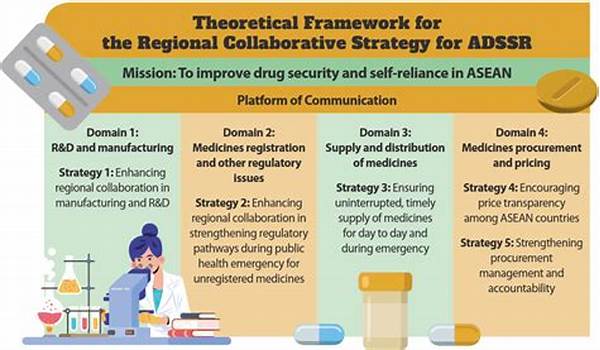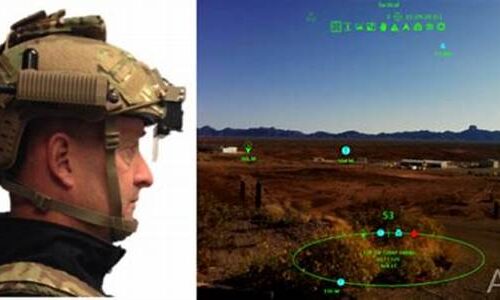Importance of Regional Defense Collaborations
In the modern geopolitical landscape, regional defense collaborations have become a crucial component in ensuring stability and security across different parts of the globe. These collaborations involve the strategic alliance of neighboring countries or regions with the objective of mutual defense and peacekeeping. As conflicts transcend borders due to globalization and technological advancements, it is imperative that nations work together to combat threats effectively. Regional defense collaborations can encompass joint military exercises, intelligence sharing, and technology exchanges, all aimed at enhancing collective security.
Such alliances not only mitigate regional conflicts but also contribute substantially to global peace. Countries involved in regional defense collaborations benefit from shared resources, including intelligence and technology, which bolster their defensive capabilities. This collective strength deters potential aggressors and plays a significant role in swiftly addressing any emerging security threats. Moreover, these collaborations foster trust and diplomatic relationships, serving as a foundation for economic, political, and cultural cooperation.
In addition to political and security advantages, regional defense collaborations can catalyze regional development. By pooling resources, countries can achieve greater efficiencies and cost savings. Training programs and joint initiatives provide opportunities for cross-border mobility and skill development, further enriching the involved nations. Ultimately, these collaborative efforts work towards a more secure and prosperous future, underscoring the need for robust and enduring alliances.
Benefits of Regional Defense Collaborations
1. Strengthened Security: Regional defense collaborations enhance the security landscape by pooling resources and intelligence, thereby increasing the ability of participating countries to respond to threats effectively and promptly.
2. Enhanced Diplomatic Relations: These collaborations build trust and diplomatic relationships among participating nations, fostering cooperation not only in defense but also in various other sectors such as trade and education.
3. Economic Advantages: Through the sharing of defense-related technologies and cost-sharing of military projects, regional defense collaborations can lead to significant economic benefits for the nations involved.
4. Technical Advancement: Countries involved in regional defense collaborations often share technological advancements, which leads to improved military capabilities and innovation in defense technologies.
5. Cultural Exchange: Joint exercises and initiatives create opportunities for cultural exchange and understanding, promoting peace and stability through better mutual comprehension.
Challenges in Regional Defense Collaborations
Regional defense collaborations are not without challenges. One of the primary issues is the disparity in military capabilities among collaborating countries. Variances in technological advancement, military readiness, and resource allocation can create imbalances within the alliance. Such disparities can lead to friction and require careful management to ensure all members benefit equally from the collaboration. Politically, there might also be differences in national interests and strategies that need to be resolved diplomatically, requiring significant negotiation and compromise.
Another challenge is maintaining cohesiveness in decision-making processes. With multiple countries involved, reaching consensus on defense strategies and priorities can be complicated. This necessitates establishing clear communication channels and decision-making protocols to facilitate smooth operations. Furthermore, the dependency on shared intelligence and resources calls for robust protective measures and trust among the participating nations to prevent vulnerabilities and the risk of espionage.
Frameworks for Successful Regional Defense Collaborations
Effective regional defense collaborations rely on clearly defined frameworks and agreements. Establishing transparent protocols for intelligence sharing and joint operations is essential. Countries often develop a structured approach that includes periodic summits, bilateral and multilateral dialogues, and designated communication channels to ensure seamless cooperation. Trust is built through consistent engagement and resolve to uphold agreements collectively.
Moreover, the establishment of joint task forces or peacekeeping missions often features prominently in these collaborations, promoting unified action in crisis scenarios. Education and exchange programs among military personnel further strengthen these alliances, fostering mutual respect and understanding. A focus on interoperability ensures that collaboration can be efficient, particularly in complex operations involving multiple nations.
Innovating Through Regional Defense Collaborations
As regional defense collaborations evolve, innovation remains central to their development. Shared research and development projects are increasingly common, allowing nations to co-develop cutting-edge technologies and defense systems. These initiatives support not only military advancements but also civilian applications, broadening the impact of these collaborations. Regional defense collaborations are also employing cyber defense strategies, acknowledging the modern threats in the digital domain that require collective strategies.
Innovations in regional defense collaborations emphasize adaptability and resilience. Flexible frameworks that can respond swiftly to changes in the geopolitical climate are invaluable. Therefore, collaborations are continuously reviewing and adapting their strategies to stay relevant and proactive against emerging threats. This innovative approach ensures that these collaborations are not only effective but are also equipped for future challenges.
Future Prospects for Regional Defense Collaborations
The future of regional defense collaborations appears promising, provided that existing challenges are addressed effectively. With advancing technology and the ever-changing nature of global threats, these collaborations are poised to gain increasing relevance and importance. Nations are likely to deepen these alliances, employing more sophisticated technology and intelligence sharing to counter threats such as cyber attacks and terrorism.
Looking ahead, there is significant potential for regional defense collaborations to expand their scope, encompassing broader agenda items like disaster response and humanitarian aid. This would not only enhance their utility but also promote goodwill among nations. Ultimately, the continuous enhancement of these collaborations could contribute to a more peaceful and stable global landscape, as nations work together to foster development and security.
Summary of Regional Defense Collaborations
Regional defense collaborations are indispensable mechanisms for enhancing security and fostering unity among neighboring nations. By pooling resources and sharing intelligence, such alliances effectively work towards mitigating regional and global threats. The diverse benefits span strengthened security, economic cooperation, and enhanced diplomatic relationships. Regional defense collaborations also play a vital role in promoting technological innovations within military frameworks, further fortifying national defense capabilities.
Despite the evident advantages, regional defense collaborations face several challenges, including imbalances in military capabilities and the complexities of multi-nation decision-making. However, through structured frameworks, transparent communication, and consistent engagement, these challenges can be effectively navigated. As the global landscape continues to evolve, regional defense collaborations are expected to adapt and innovate, ensuring their relevance in addressing emerging security issues. Through concerted efforts, these collaborations can significantly contribute to global peace and stability in the coming years.





